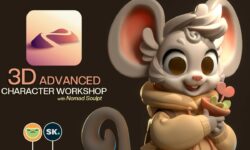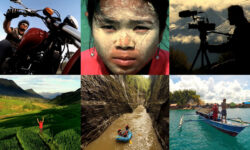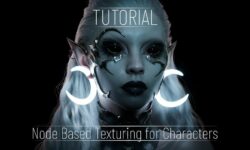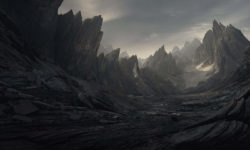Introduction
Welcome 51s
Using the exercise files 59s
What is ZBrush? 1m 47s
A note on screen resolution 1m 32s
Update for ZBrush 4R7 54s
1. Understanding the Interface
Making sense of ZBrush 2m 39s
Understanding the interface 2m 29s
Using Light Box 1m 23s
Navigating the canvas 2m 2s
Using Perspective and Floor 1m 51s
Understanding local centering 1m 9s
Trying different materials 2m 7s
Activating symmetry 2m 15s
Viewing your work in various ways 3m 22s
2. Creating Meshes
Understanding polygon-based models 1m 45s
Creating ZSpheres 4m 21s
Using ShadowBox 2m 15s
Making a ZSketch 2 m 47s
Extracting from an existing mesh 3m 59s
Using primitive 3D meshes 3m 24s
Importing from other programs 1m 27s
3. Brushes and Sculpting
Understanding brush settings 2m 45s
Inverting brush effects 1m 8s
Switching to Smooth mode 2m 34s
Setting the stroke properties 4m 14s
Working with alphas 2m 34s
Using the Move brush 2m 51s
Using the Clip brush 2m 58s
Learning a few more common brushes (Polish, Clay, Flatten, Inflate. Tracks) 2m 14s
Saving and using brush presets 2m 23s
4. Working with Tools
Working with tools and projects 1m 52s
Working with subdivision levels 3m 4s
Masking off parts of your model 2m 28s
Masking based on cavity and occlusion 4m 23s
Selecting and hiding parts of a tool 2m 50s
Working with polygroups 2m Using deformation 1m 59s
Mirroring geometry across an axis 1m 49s
Restoring symmetry 1m 45s
Creating morph targets 2m 31s
Understanding surface normal direction 2m 11s
5. Working with Subtools
Learning the basics of subtools 2m 36s
Making new subtools 3m 12s
Combining subtools 3m 8s
6. Deforming with Transpose
Masking with Transpose 1m 49s
Adjusting the Transpose Manipulator 1m 46s
Moving, scaling, and rotating with Transpose 3m 45s
7. Painting and Texturing with Color
Understanding how ZBrush uses color 2m 36s
Learning the basics of Spotlight 3m 37s
Painting and texturing with Spotlight 2 m 56s
Texturing a head: A practical approach 11m 16s
8. Retopology: Making Riggable Models
Drawing new edge flow for retopology 7m 52s
Tips for making good edge flow 5m 14s
Creating new topology 3m 55s
Transferring detail from the old model to the new 4m 13s
9. UV Layout and Maps
Understanding the UV maps 2 m 47s
Installing the UV Master plug-in 1m 47s
Using UV Master 3m 46s
Creating texture maps 5m 8s
10. Troubleshooting
Preventing problems 1m 42s
Recovering a corrupted model 2m 28s
Recognizing and fixing common problems 2m 25s
Conclusion Examples of ZBrush work 3m 16s
Goodbye 1m 5s





 Channel
Channel





